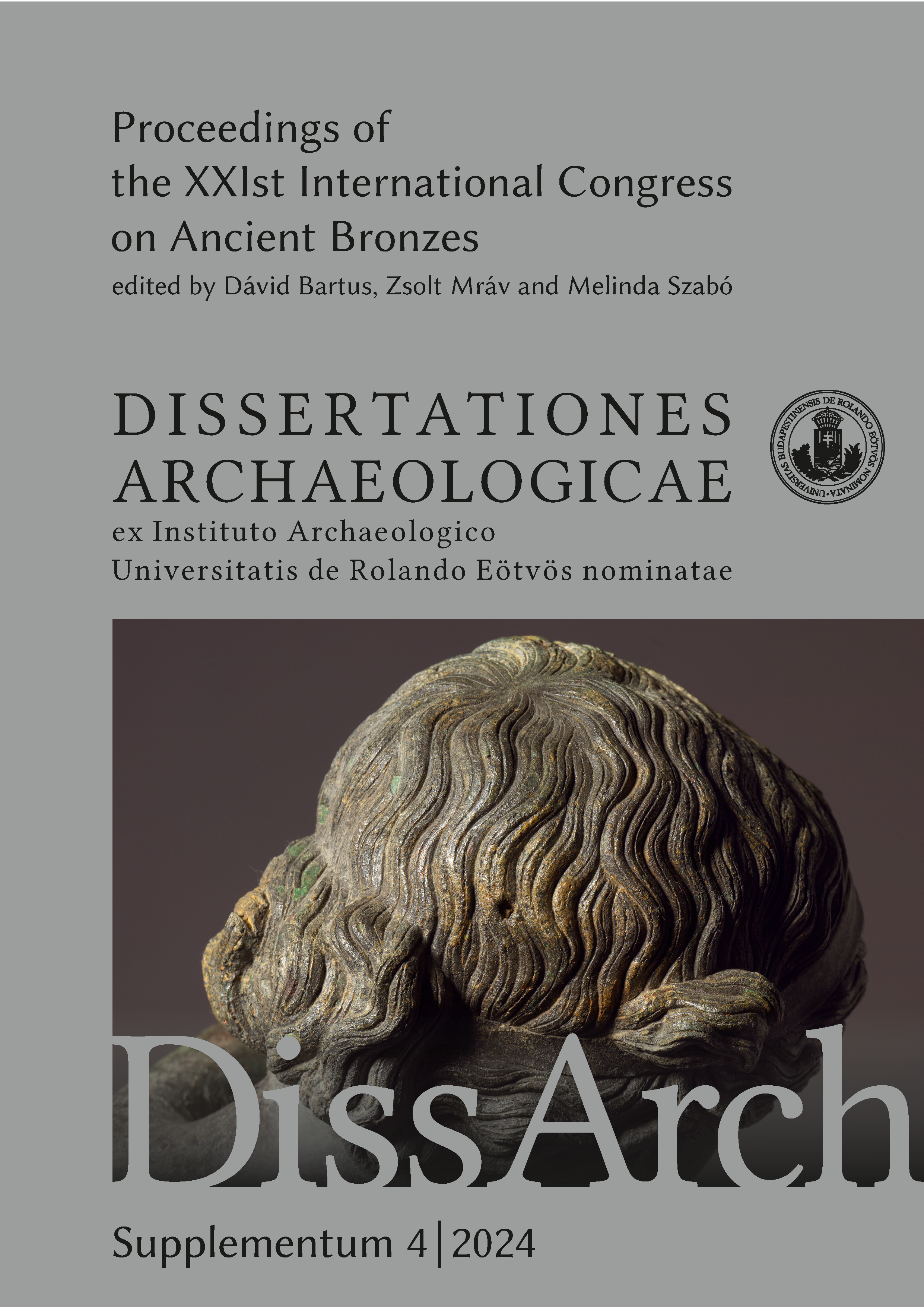Published 2024-09-30
Keywords
- candelabrum,
- Herakles,
- centaur,
- bronze tree,
- late Hellenistic period
How to Cite
Abstract
The bronze candelabrum found in 1896 during the Austrian excavations in the ›Marble Hall‹ of the Harbour Gymnasium in Ephesus, which shows a group with two persons—Herakles fighting with a Centaur—in front of a tree, has been part of the collection of antiquities of the Kunsthistorisches Museum Vienna since the end of the 19th century. In the course of recent research, questions concerning the history of the find and the object, technical aspects and modern restoration measures, as well as the dating and the original context of the installation were addressed. Scientific analyses were carried out, which helped to identify one of three other fragments present, a horse’s front hoof, as belonging to the group. A second human foot and a horse hind leg indicate that there was a second group of the same size. This one, however, was not quite identical as assumed in previous research, but probably showed a similar motif—maybe the hero kneeling on the centaur. Stylistic and technical aspects point to a dating in late Hellenistic times, in the middle of the 1st century BC, and eventually to a workshop in Alexandria. It is therefore possible that this is the oldest preserved bronze candelabrum of this form.


